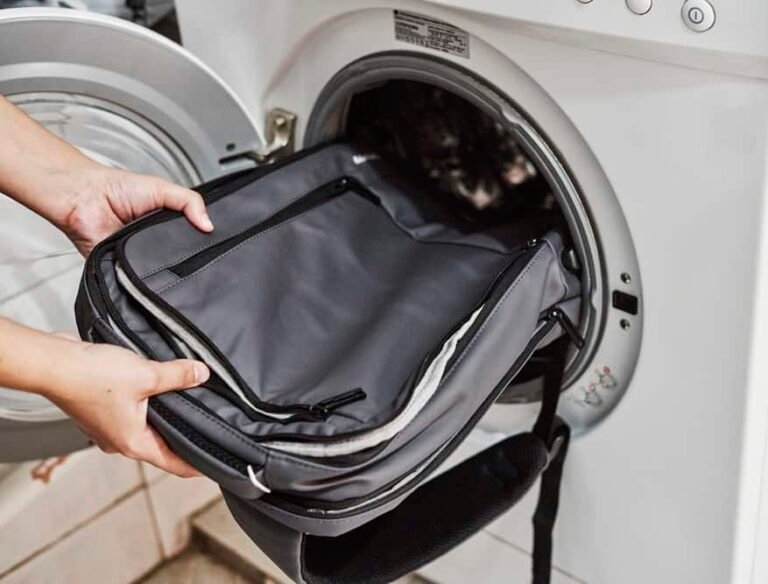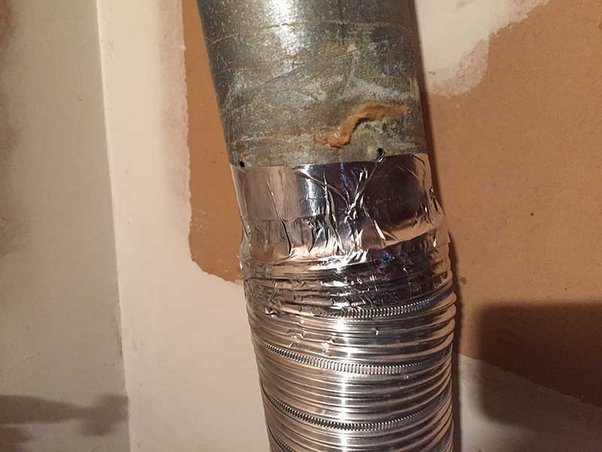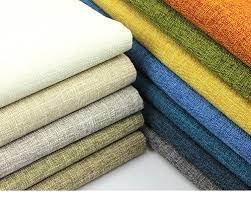Outdoor Line Drying: Embrace Sustainable Living!
Key Takeaways:
- Outdoor line drying is an effective and eco-friendly way to dry your clothes.
- It helps to preserve the quality and longevity of your clothing.
- Outdoor line drying saves energy and reduces your carbon footprint.
- It provides a natural and fresh scent to your laundry.
Do you want to save energy, reduce your carbon footprint, and lower your electricity bill?
Look no further than outdoor line drying! Not only is it environmentally friendly, but it also brings a fresh and natural scent to your laundry.
In this article, I’ll guide you through the benefits and provide tips on setting up and efficiently using an outdoor clothesline.
We’ll also address common concerns and explore alternative solutions for those who may not have the space for a traditional clothesline.
Get ready to embrace the simplicity and charm of line drying!
| Advantages of Outdoor Line Drying | Disadvantages of Outdoor Line Drying |
|---|---|
| Saves money on energy bills | Weather dependent |
| Takes advantage of natural sunlight | Can be time-consuming |
| Reduces environmental impact | May cause clothes to fade |
| Fresh air scent on clothes | May be prohibited in some residential areas |
| Extends the lifespan of clothes | Potential risk of pollen or allergens |
The Benefits of Outdoor Line Drying
Save energy, reduce your carbon footprint, and enjoy cost savings by line drying your clothes outdoors.
Environmentally Friendly: Save Energy and Reduce your Carbon Footprint
Want to be environmentally friendly and reduce your carbon footprint?
Outdoor line drying is a simple yet effective way to save energy.
By hanging your laundry outside instead of using a dryer, you can drastically cut down on your energy consumption.
It’s a small change that can make a big difference for the environment.
Plus, line drying also helps to preserve the quality of your clothes and save you money on your energy bills.
So why not give it a try?
It’s a win-win situation!
Cost Savings: Lower your Electricity Bill
Lowering your electricity bill is one of the key benefits of outdoor line drying.
By reducing your reliance on electrical dryers, you can save a significant amount of money each month.
Outdoor line drying requires no electricity, making it an environmentally-friendly and cost-effective alternative.
Furthermore, hanging your clothes in the fresh air and sunlight can also help them last longer, reducing the need for frequent replacements.
So, next time you have laundry to do, consider harnessing the power of the great outdoors to lower your electricity bill and save some money in the process.
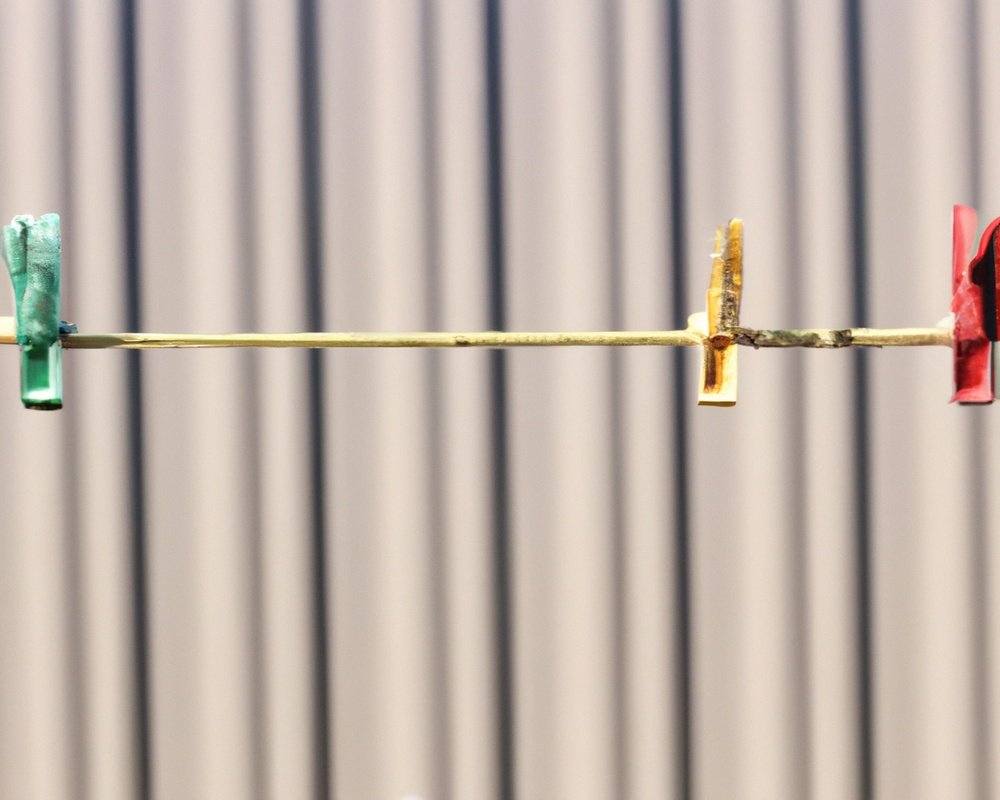
Fresh and Natural: Enjoy the Smell of Sun-dried Laundry
There’s nothing quite like the fresh and natural smell of sun-dried laundry.
When you hang your clothes outside to dry, you get to enjoy that wonderful scent every time you put on a clean shirt or slip into freshly washed sheets.
Plus, line drying is an eco-friendly choice that saves energy and money.
No need for dryer sheets or artificial fragrances, just the simple pleasure of clothes dried by the sun.
So next time you do laundry, give outdoor line drying a try and savor the natural aromas that come with it.
How to Set Up an Outdoor Clothesline
Setting up an outdoor clothesline is simple and requires three key steps: choosing the right location, selecting the right clothesline type, and installing it properly.
Selecting the Right Clothesline Type
Selecting the right clothesline type for your outdoor drying needs is essential.
Here are some factors to consider:
- Space: Evaluate the available space in your yard or balcony. Options include rotary, retractable, or parallel clotheslines.
- Material: Choose a durable clothesline material like nylon or stainless steel that can withstand outdoor conditions.
- Length: Determine the length you need based on the amount of laundry you usually hang.
- Installation: Consider the ease of installation. Some clotheslines require professional setup, while others can be easily installed by yourself.
- Accessibility: Choose a height and length that is convenient for you to reach and maneuver.
- Maintenance: Consider the maintenance requirements of each clothesline type. Some may need periodic adjustments or weatherproofing.
Take these factors into account when selecting the right clothesline type to ensure efficient and effective outdoor line drying.
Tips for Efficient Outdoor Line Drying
To make your outdoor line drying more efficient, consider the optimal sunlight and weather conditions, sorting and hanging your laundry strategically, and using proper clothing placement and techniques for faster drying.
Time of Day: Optimal Sunlight and Weather Conditions
The optimal time of day for outdoor line drying is when you have ample sunlight and favorable weather conditions.
The best time is usually in the morning or early afternoon when the sun is high and strong.
This allows your clothes to dry more quickly and efficiently.
It’s important to check the weather forecast for any chance of rain or excessive humidity, as these conditions can prolong drying time.
Additionally, avoid line drying during extremely hot or windy conditions, as they can negatively affect the quality of your clothes.
Keep an eye on the sun’s position and the weather, and choose the ideal time to hang your laundry for optimal results.

Sorting and Hanging Laundry for Effective Drying
Sorting and hanging laundry properly is essential for effective drying.
First, sort your clothes by fabric type and weight.
Heavy items like jeans take longer to dry, so separate them from lighter garments like t-shirts.
Hang clothing evenly on your drying rack or clothesline to prevent drooping and ensure proper air circulation.
Avoid overcrowding to allow for thorough drying.
Lastly, position your laundry in a sunny and well-ventilated area for faster drying.
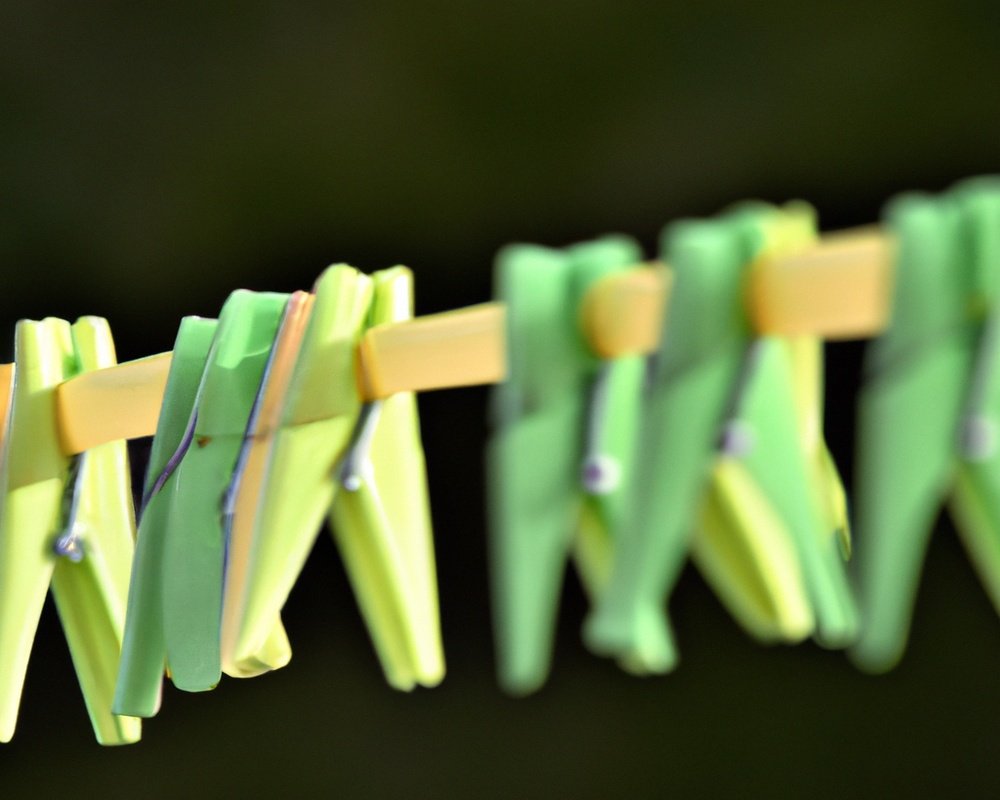
Proper Clothing Placement and Techniques for Faster Drying
Proper clothing placement and techniques can significantly speed up the drying process when line drying outdoors. To ensure faster drying, here are some tips:
- Shake out the clothing before hanging them to remove any excess moisture or wrinkles.
- Group lightweight and thin fabrics together, and heavy or bulky items separately.
- Hang clothes in a way that allows air to circulate freely around them, avoiding placing them too close together.
- Consider using clothespins or hangers to avoid creases and help clothes dry faster.
- Take advantage of sunny and windy weather conditions, as they can greatly aid in the drying process.
These tricks will help your laundry dry more efficiently, allowing you to enjoy fresh and dry clothes in no time.
What to Consider when Line Drying Outdoors
When line drying your laundry outdoors, there are a few factors to consider.
Weather Considerations: Rain, Humidity, and Extreme Temperatures
Weather conditions play a significant role when considering outdoor line drying.
Rain can ruin your efforts, so it’s best to choose a dry day.
High humidity can prolong drying time and lead to musty smells.
Extreme temperatures can damage delicate fabrics or cause them to shrink.
Consider these factors before hanging your laundry outside to ensure the best results.
Dealing with Pollen, Dust, and Air Pollution
Dealing with pollen, dust, and air pollution while line drying outdoors can be a challenge.
To minimize the impact on your clothes, you can try the following:
- Choose the right time: Dry your clothes when pollen levels are typically lower, like in the evening or after rainfall.
- Shake out your clothes: Before hanging them, give your clothes a good shake to remove any dust or pollen that may have settled on them.
- Consider using a clothes cover: Invest in a clothes cover or garment bag to protect your clothes from airborne pollutants.
- Wash clothes more frequently: Regularly washing your clothes will help remove any pollen or dust that may have collected on them.
- Use a lint roller: After line drying, use a lint roller to remove any remaining pollen or dust from your clothes.
- Choose a suitable drying location: Select a spot for drying that is away from busy roads, construction sites, or other sources of air pollution.
Remember, even with these precautions, it may not be possible to completely eliminate pollen, dust, or air pollution.
But by taking these steps, you can minimize their impact and keep your clothes as clean as possible.
Privacy and Aesthetic Concerns: Addressing Any Potential Issues
When it comes to line drying outdoors, it’s important to consider privacy and aesthetic concerns.
To address potential issues, you can:
- Utilize privacy screens: Place screens or barriers around your drying area to create a sense of privacy and prevent neighbors from seeing intimate clothing items.
- Opt for strategic placement: Choose a location for your drying area that is less visible from the street or neighboring properties.
- Use discreet clothing hangers: Invest in hangers or clothespins that are aesthetically pleasing and blend well with your outdoor surroundings.
- Consider the time of day: Hang your laundry during times when fewer people are likely to be outside to ensure more privacy.
- Use decorative elements: Incorporate potted plants, flower boxes, or trellises to add beauty and distract attention from drying clothes.
By addressing privacy and aesthetic concerns, you can enjoy the convenience and eco-friendly benefits of line drying while maintaining a visually appealing outdoor space.
Alternatives to Traditional Clotheslines
Looking for alternatives to traditional clotheslines? Check out these options for convenience, space-saving, and versatility.
Retractable Clotheslines: Convenience and Space Saving
Retractable clotheslines offer convenience and save space in your outdoor area. With a simple pull, these lines extend for hanging laundry, and when you’re done, they retract back into their housing.
Not only do they provide a neat and organized look, but they also free up valuable space compared to traditional clotheslines.
Whether you have a small backyard or limited outdoor space, retractable clotheslines are a practical solution for air-drying your laundry.
Drying Racks: Versatile Indoor and Outdoor Options
Drying racks are a versatile option for both indoor and outdoor use. They offer a convenient way to dry clothes without taking up a lot of space.
When using a drying rack indoors, make sure it is placed in a well-ventilated area to allow for proper air circulation.
Outdoor drying racks can be placed in your backyard or balcony to take advantage of natural sunlight and fresh air. Some drying racks are adjustable, allowing you to customize the space based on your laundry load.
They are an efficient and eco-friendly alternative to using a clothes dryer.
Other Creative Solutions: Fence and Wall Hooks, DIY Design Ideas
If you’re looking for additional options for line drying your clothes outdoors, consider using fence and wall hooks or exploring DIY design ideas.
Fence and wall hooks can be easily installed and provide a convenient hanging space for your laundry.
Additionally, you can get creative by designing your own outdoor drying racks using materials like PVC pipes or wooden frames.
These alternatives offer flexibility and practicality for drying your clothes in the open air.
Frequently Asked Questions about Outdoor Line Drying
Can I line dry in any weather?
You may be wondering if you can line dry your clothes in any weather. Well, the answer is not a simple yes or no.
While line drying is generally best done in good weather, it is still possible to line dry in less than ideal conditions.
Here are a few things to consider:
- Rainy weather: If it’s raining, it’s best to avoid line drying as your clothes will not dry properly and may even get wetter. However, if you have a covered outdoor space or a well-ventilated indoor area, you can still hang your clothes to dry.
- Humidity: High humidity can slow down the drying process and make your clothes feel damp. In such cases, it’s best to wait for a drier day or consider using a dehumidifier in your drying area to speed up the process.
- Winter and cold weather: Line drying in freezing temperatures or snow is not advisable. The clothes will freeze and take a long time to dry, if they dry at all. In cold weather, it’s better to use indoor drying racks or clotheslines.
- Windy conditions: Windy weather can actually be beneficial for line drying as it helps to speed up the drying process. Just make sure to secure your clothes properly on the line to prevent them from blowing away.
Is line drying suitable for all types of fabrics?
Line drying can be suitable for most types of fabrics, but there are a few exceptions.
Delicate fabrics like silk or lace may be damaged by the weight of wet clothes or by stretching on a line.
Certain materials, such as leather or suede, should not be dried outdoors as they can be adversely affected by moisture and sunlight.
For most other fabrics, line drying is a great option that conserves energy and can help extend the life of your clothes.
Just be sure to check care labels for specific instructions and use clothespins or hangers to minimize wrinkles.
How can I prevent clothes from getting stiff or wrinkled when line drying?
To prevent clothes from getting stiff or wrinkled when line drying, here are a few tips to keep in mind:
- Shake them out: Before hanging your clothes, give them a good shake to loosen any wrinkles and restore their natural shape.
- Smooth them out: Smooth out any wrinkles or creases by running your hands over the fabric. This will help prevent them from setting in as the clothes dry.
- Use fabric softener: Adding a fabric softener to your laundry can help keep your clothes soft and reduce the potential for stiffness. Follow the instructions on the bottle for the best results.
- Hang properly: Hang your clothes in a way that allows for proper airflow. Use clothespins or hangers to avoid leaving crease marks and help maintain the shape of the garment.
- Avoid overcrowding: Give your clothes enough space on the drying line to allow air circulation. Overcrowding can lead to slower drying times and increased wrinkling.
- Time it right: Choose a time to line dry when the weather is mild and less humid. Extreme heat or high humidity can cause clothes to become stiff or take longer to dry.
Can line drying fade colors?
Can line drying fade colors?
Yes, line drying can potentially fade colors, especially when exposed to direct sunlight for extended periods.
UV rays from the sun can break down the dye molecules in fabrics, causing fading over time.
To minimize the risk of color fading, consider these tips:
- Turn clothes inside out before hanging them to dry, as this can reduce direct exposure to sunlight.
- Choose a shaded or partially shaded area for drying, away from direct sunlight.
- Dry clothes inside out when possible to further protect the colors.
- If you have delicate or brightly colored items, consider using a clothesline with a cover or using a drying rack indoors.
By taking these precautions, you can help preserve the colors of your clothes while enjoying the benefits of line drying.
Final Verdict
Outdoor line drying provides numerous benefits that make it a worthwhile and sustainable choice.
Not only does it help to reduce your carbon footprint and save energy, but it also leads to significant cost savings on your electricity bill.
Additionally, sun-dried laundry offers a fresh and natural scent that can’t be replicated with a dryer.
By following proper setup and drying techniques, you can efficiently line dry your clothes outdoors for optimal results.
Considerations such as weather conditions and fabric type should be taken into account, but with a little planning, line drying can become a simple and rewarding part of your laundry routine.
So why not give it a try?
Your clothes and the environment will thank you.


